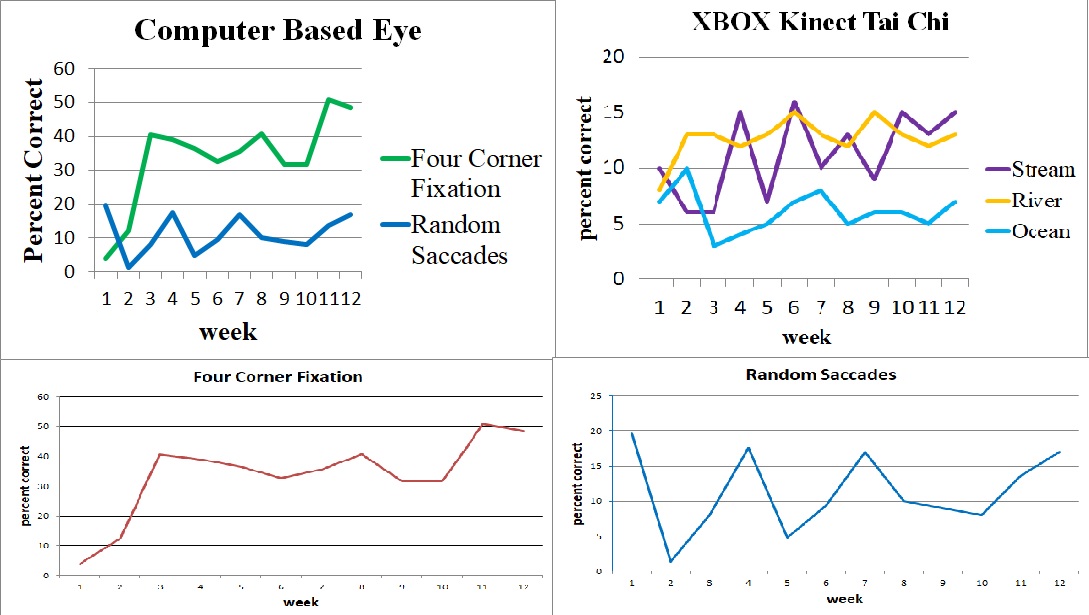Category: Parkinsonism, Atypical: PSP, CBD
Objective: To evaluate the effectiveness of exergaming-based tai chi and eye movement training in improving functional balance, gait and quality of life in a patient with PSP who has significant gaze deficits, trunk rigidity and impaired balance.
Background: Progressive supranuclear palsy (PSP) is a neurodegenerative disease and the most common atypical parkinsonian syndrome. Initial motor symptoms are symmetrical and axial with associated gait difficulties and falls. As the condition progresses, one of the main oculomotor findings is the inability to saccade downward. The inability to generate saccades can compromise one’s safe ambulation. Tai Chi improves cognition and dual-task ability and has previously shown improvement in stability and walking functions in people with Parkinson’s disease. The effectiveness of a rehabilitation intervention tailored to enhance suppression of fixation and gaze shift with exergaming-based Tai Chi training in participants with PSP has not been investigated yet.
Method: A 66-year-old caucasian male, community ambulator and in the early or middle stages of PSP, participated in 3 months of home rehabilitation program. The patient had balance deficits, walking disorders, difficulty looking down and a tendency to repeated and sudden falls. The patient received 36 training sessions (three, 50-min sessions per week) during a 12-week period. The intervention included exergaming-based Tai Chi and eye movement training software. The assessment of balance and gait was done using: Berg Balance Scale, Dynamic Gait Index, Functional Reach test, Timed Get Up and Go Test, 10-Meter Walk Test and the patient was required to fill out a falls diary. The tests were done before the intervention, in the middle of the intervention and on the last day of the treatment. In addition, the feeling of enjoyment from the program was assessed through an interview and the Short Feedback Questionnaire (SFQ).
Results: The patient reported a lot of enjoyment from the treatment and a decrease in the number of falls during and after the treatment. Balance and walking parameters improved after treatment and the patient was able to walk independently inside his home.
Conclusion: exergaming-based Tai Chi training combined with eye movement training has the potential to be used as a clinical therapeutic tool to improve balance and gait and reduce the risk of falls in people with PSP.
References: https://doi.org/10.1016/j.parkreldis.2017.02.006
https://doi.org/10.1080/09593985.2022.2032509
https://doi.org/10.1016/j.apmr.2008.07.024
10.3389/fnagi.2022.761053
To cite this abstract in AMA style:
Y. Levitan-Marcus. Effects of exergaming-based tai chi and eye movement training on balance and gait in progressive supranuclear palsy: a case report [abstract]. Mov Disord. 2023; 38 (suppl 1). https://www.mdsabstracts.org/abstract/effects-of-exergaming-based-tai-chi-and-eye-movement-training-on-balance-and-gait-in-progressive-supranuclear-palsy-a-case-report/. Accessed April 2, 2025.« Back to 2023 International Congress
MDS Abstracts - https://www.mdsabstracts.org/abstract/effects-of-exergaming-based-tai-chi-and-eye-movement-training-on-balance-and-gait-in-progressive-supranuclear-palsy-a-case-report/

